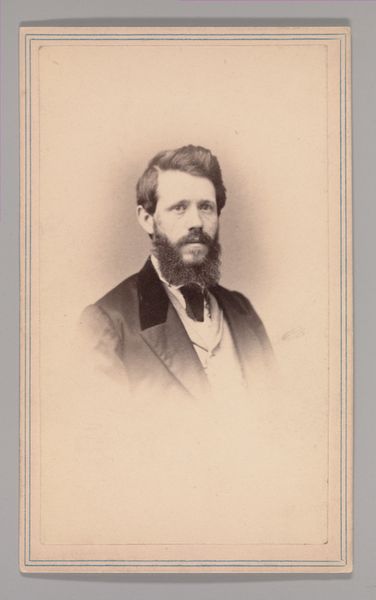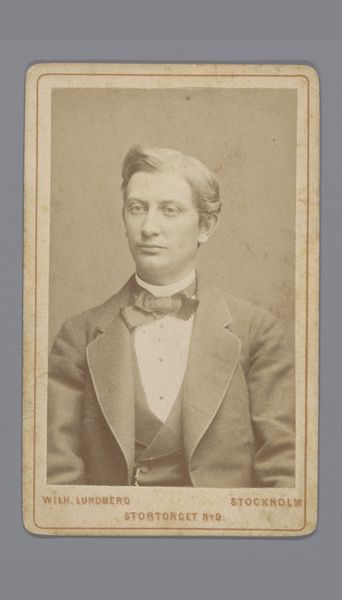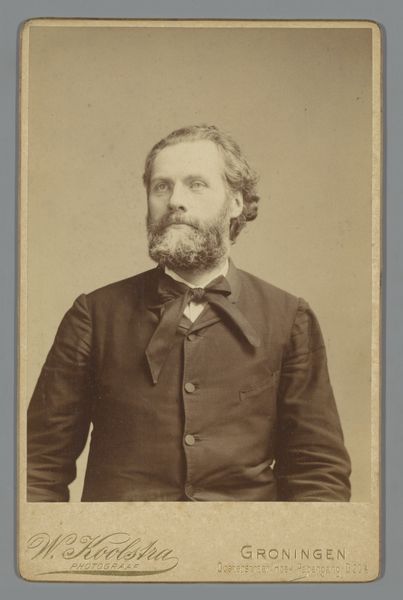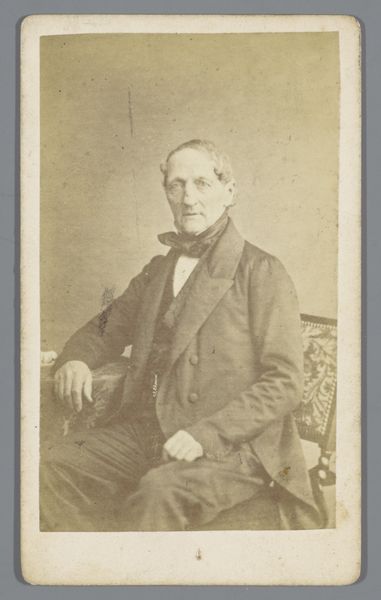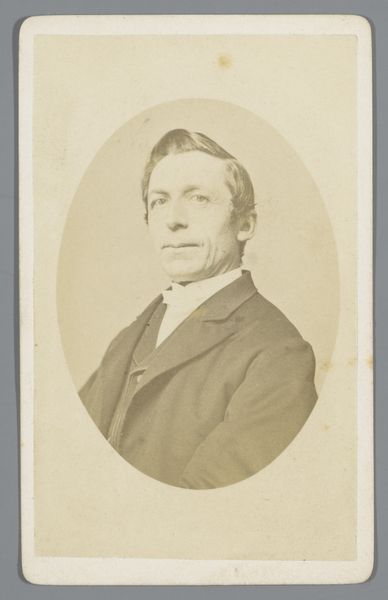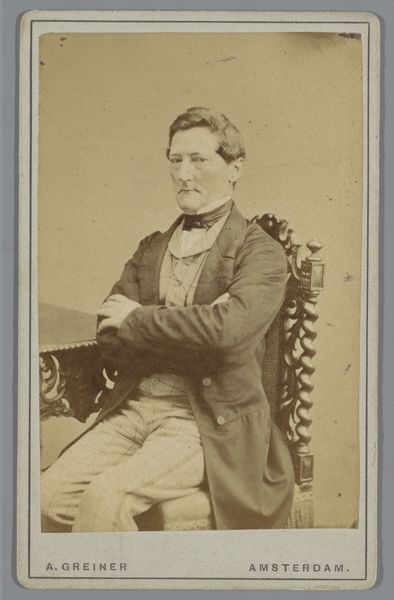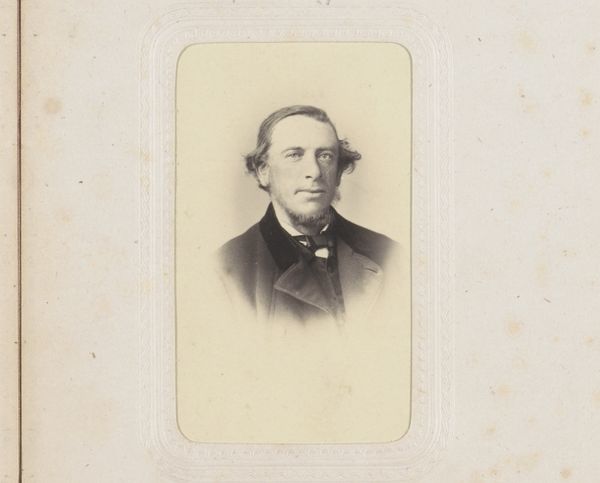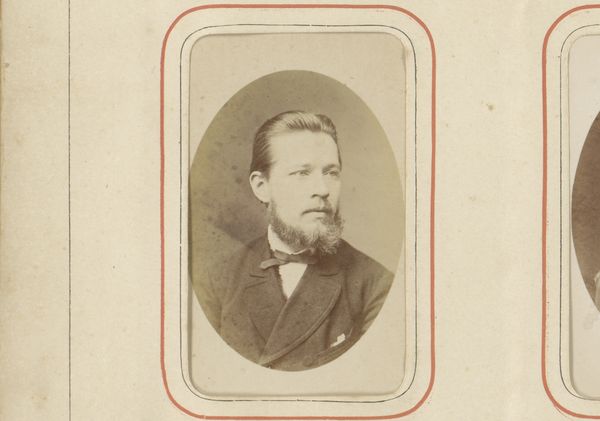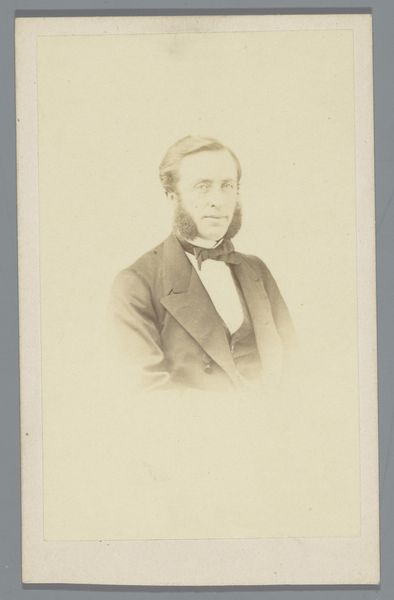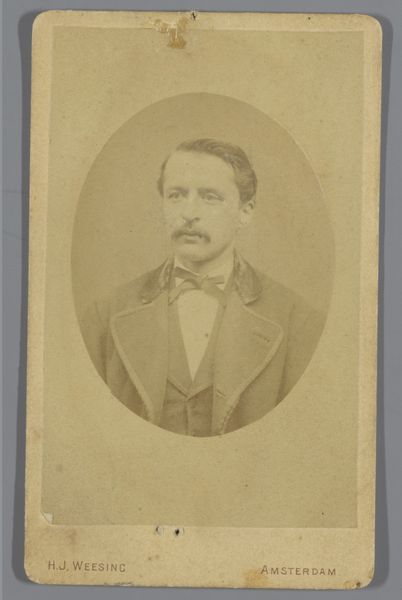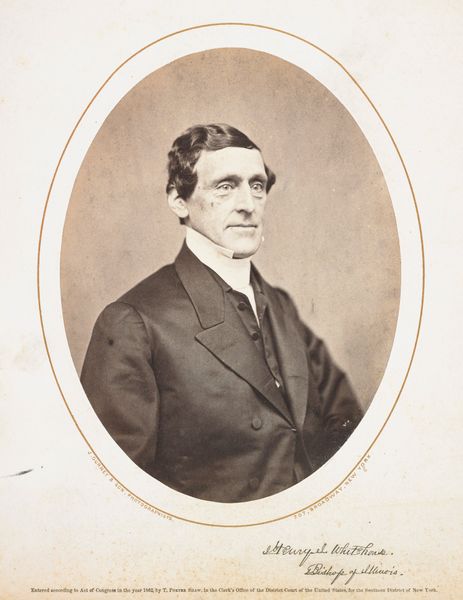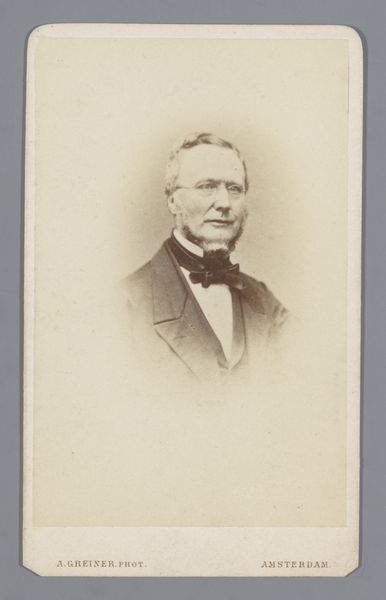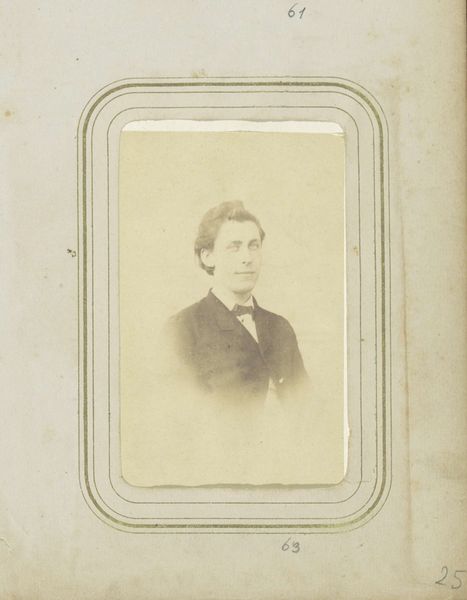
photography, gelatin-silver-print
#
portrait
#
portrait image
#
photography
#
gelatin-silver-print
#
portrait art
#
realism
Dimensions: height 102 mm, width 61 mm
Copyright: Rijks Museum: Open Domain
Editor: So here we have a gelatin-silver print, a portrait entitled "Portrait of an Unknown Man with Sideburns," dating from the late 19th century. It’s quite striking how posed and formal he looks, almost…serious. What jumps out at you about this portrait? Curator: Well, considering this was taken between 1855 and 1884, think about the burgeoning middle class and its desire to emulate the aristocracy. Photography was becoming more accessible, a powerful tool for self-representation and social climbing. The portrait becomes a document, a symbol of achieved status and respectability. How does that influence your initial feeling about the subject's seriousness? Editor: That definitely contextualizes it. Knowing that it could be a deliberate projection of an upwardly mobile identity shifts my perspective. Did this democratization of portraiture have any impact on traditional painting? Curator: Absolutely! Photography directly challenged painting’s role in capturing likeness. It spurred painters to explore more abstract and expressive forms. Think of the Impressionists, breaking away from realism to depict fleeting moments and subjective experiences. Does this relationship change how we understand the photographic portrait's function at the time? Editor: Yes, it emphasizes its role as a statement, maybe even a slightly performative one. The seriousness then feels less intrinsic to the subject and more about projecting a certain image for public consumption. I’d never considered the power dynamics inherent in early portrait photography. Curator: Exactly. Considering the social and historical conditions allows us to read deeper into what seems like a straightforward representation. It makes you wonder what he's really thinking, doesn't it? Editor: Definitely. Thanks; this has given me a lot to consider about the sitter’s world and the power of representation. Curator: My pleasure. Understanding art means also understanding its role and cultural weight in the society that produces and receives it.
Comments
No comments
Be the first to comment and join the conversation on the ultimate creative platform.
